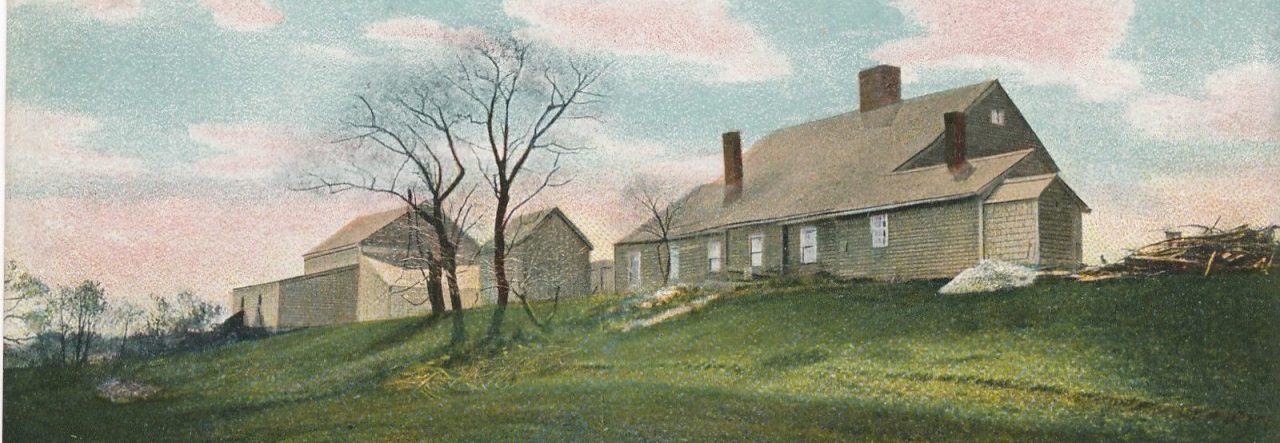(In the Herald-Citizen 7/10/2020)
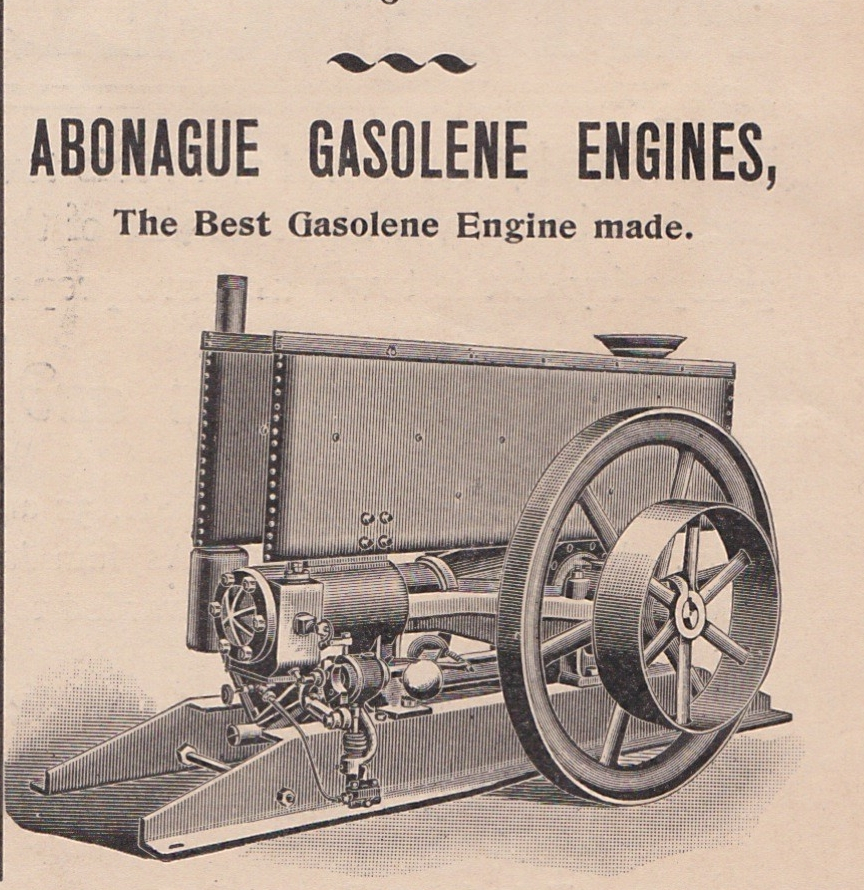
As the 20th century dawned, Danvers’ long-held farm town traditions became mixed with a new century of business and commerce that revolutionized daily life for Danversites. The program for Danvers’ 150th celebration in 1902 reveals much about what life was like in Danvers that year. The anniversary events are significant – with a grand parade led by Penn Hussey (whose equestrian statue is on Water St.), band concerts, a bicycle race, a “Rube” who gave a “unicycle exposition,” and races between the Danvers volunteer fire companies – but what is truly interesting and revealing are the advertisements. With ads such as a pig seller’s notice that declared “All the hogs are not found on the end seat of street cars,” those for horse products such as iron shoes, farm supplies that included new “gasolene” engines, the new “steam laundry” in town, and the electrician who advertised “speaking tubes,” the program provides a picture of a small turn-of-the-century agricultural town.
The vast majority of businesses noted in the program were clustered around Danvers Square, and one business advertised free telegram delivery within a mile of the Square. There are some similarities between the Square of 1902, and the center of town today. Luciano Zollo, a self-described “champion hair cutter” advertised a “Bay of Naples shaving parlor” at 64 Maple Street, and Zollo’s barbershop has been a fixture ever since.

Perley’s Corner Market, a combination grocery store and general store that opened in 1800, stood where CVS is today, and CVS serves more or less the same function as Perley’s store did then. Another grocer advertised that they were a distributor of King Arthur Flour, still in stores today. Though there was no Knights of Columbus on Elm Street, there was the Catholic Order of Foresters, a fraternal organization that provided life insurance to its members – a function of the K of C today.


In contrast, many business practices have changed in the past century. Several business ads give not only the address of their business, but also the proprietor’s home address where business was also transacted. In 1902 some businesses did not have their own telephone number, and their ads simply note “telephone connection,” and one had to call the operator to be connected through. Moving goods was its own issue in the day of horse carts, and several freight carriers advertised their services. One such company announced its four daily trips into Boston where goods could be transferred to “railroads and steamboats,” and also reminded its customers that it “Runs direct to Danvers Asylum daily.”
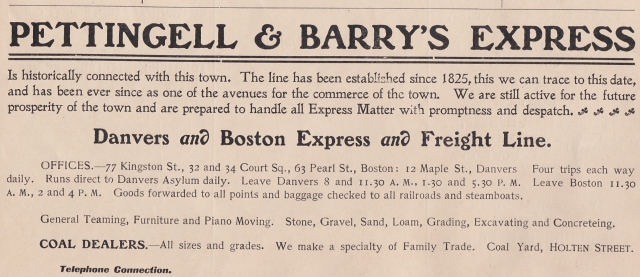
Some businesses seemed to provide odd combinations of services: An express freight delivery company also sold sod cutters. One Salem business advertised “Balletto tables” (now known as pool/billiards tables), along with cameras, and “All kinds of talking machines. All kinds of records. All kinds of talking machine supplies and repairs.” J. F. Porter in Danvers Square sold “refrigerators” (what we know as an ice box) for $11 and also screens to keep flies out of the house.
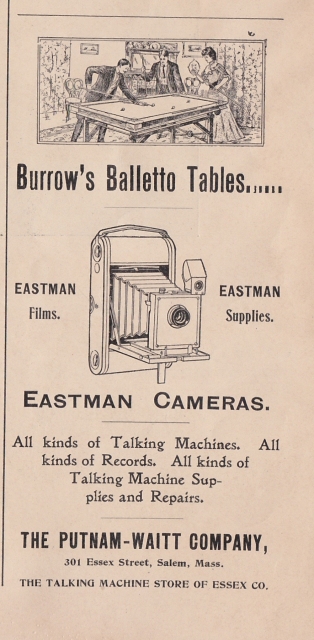
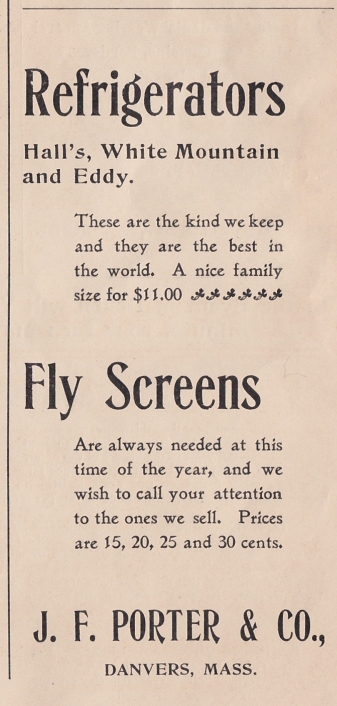
Specialization was coming to Danvers, though, as one insurance agent’s ad noted: “The time has passed when the insurance agent was also bill poster, white washer and general utility man. Insurance is a business by itself.” One other specialist was Ferdinand A. Butler, who sold bicycles, though the ad refers to them by their nickname: “a wheel.” They were billed as efficient transportation, but also relaxing: “Drop that nerve tonic and buy a wheel, and we guarantee ‘that tired feeling’ will soon disappear.”
Outside of the Square, there was a coal yard on Holten Street, a greenhouse near Walnut Grove Cemetery, a man on Endicott Street who ran a sand and gravel business out of his house, a wagon maker on Andover Street, and mills and foundries in Tapleyville and Danversport. One such mill was Lummus & Parker’s grist mill on Water Street, which was standing at least as late as 1969. Another business outside the Square was the Calvin Putnam Lumber Company, noted in a previous article in this series, which was located at the Mill Pond.


What is most fascinating are the medical and dental ads. Dr. E. F. Carter, a dentist on Maple St., had an ad that noted “Electricity employed in desensitizing teeth in order to render the work of filling practically painless.” At this time laughing gas had been in use for decades, so apparently electricity was seen as the new innovative treatment. Fortunately, Novocain was developed only three years after this ad was published. Elsewhere, dentist Dr. Walter G. Fanning took out a full page ad that showed him in a cap and gown – proof that he actually had gone to school.


The turn of the century was prime-time for weird medical “cures,” and one Danvers “laboratory” on Oak Street marketed “Anti-Itis,” that was “antiseptic, hygroscopic, prophylactic, hydro-absorbent and anodyne” that “has the affinity to increase osmosis.” This strange miracle drug would supposedly treat “lung troubles, pneumonia, pleurisy, etc., tonsillitis, laryngitis, bronchitis, consumption, inflamed breasts, rheumatism, synovitis, dysmenorrhea, eczema, sprains, burns, boils, abscess, bruises, felons, enlarged glands, insect bites, milk leg, myalgia, neuralgia, neuritis, phlebitis, whitlow, wry neck, housemaids’ knee, sunburn, frost bites, corns, enlarged joints.”

Anti-Itis was advertised around New England in medical journals, and the product was a paste that was sold by the pound, which was to be applied hot to the skin. As if the modern reader were not already skeptical that Anti-Itis was effective at all, further digging through copyright records revealed that Anti-Itis was manufactured by the Standard Crayon Company!
————————————————————————————————————————
Sources
Official Program: Danvers’ 150th Anniversary, June 15, 16, 17, 1902. Danvers, Mass.: Danvers Mirror, 1902.
Sutherland, John P., and W.H. Watters, eds. The New England Medical Gazette: A Monthly Journal of Homeopathic Medicine. Vol. 43. Boston: Medical Gazette Publishing Company, 1908.
United States Patent Office. Official Gazette of the United States Patent Office. Vol. 315. Government Printing Office, 1923.
